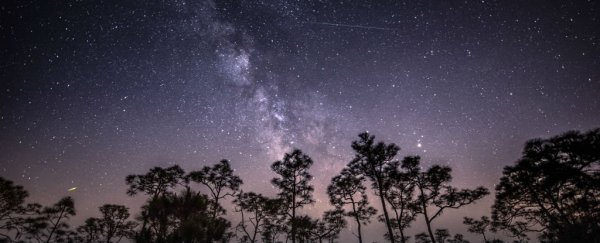Right now, Earth is passing through the tail of debris left behind by the comet 21P/Giacobini-Zinner, which sounds scary, but is actually awesome, because it brings us the spectacular Draconid meteor shower, peaking on October 7 and 8.
Most years the Draconids are quite mild, but every few years the meteor shower unexpectedly bursts into storm. During the 2011 Draconid shower, more than 600 meteors per hour were visible in the sky, despite a bright Moon at the time.
While we're not guaranteed to see such a spectacular show this year, it's worth heading out with a blanket and a hot chocolate to check it out, because you never know when the shower will become a storm.
So how do you watch? Viewing is best in the northern hemisphere and in the higher latitudes, so unfortunately the Draconids won't be visible for everyone.
But the good news is that this is one of the few meteor showers that you don't have to stay up too late for.
While most meteor showers are best viewed just before dawn, the Draconids are best viewed from just after sunset to midnight, so it's perfect for your weekend evening plans.
According to EarthSky, here's the best way to watch:
Spend an hour or more under a dark and open sky, lying down and with your feet pointing northward. Oftentimes, this hard-to-predict shower doesn't offer much more than a handful of languid meteors per hour .. But you never know for sure with the Draconids, so it's worth watching out for on the evening of October 7 and 8.
The meteor shower radiates from the northern constellation Draco the Dragon (hence its name). Because it originates so far north in our night sky, people living in northern US, Canada, Europe, and Northern Asia will have the best shot of seeing meteors.
Unfortunately, the Moon is waning gibbous at the moment, which means it rises pretty early in the evening, so get out as close to sunset as you can before the Moon rises to catch the skies while they're still dark. You can check here to see when the Moon will rise where you are.
Happy viewing!
